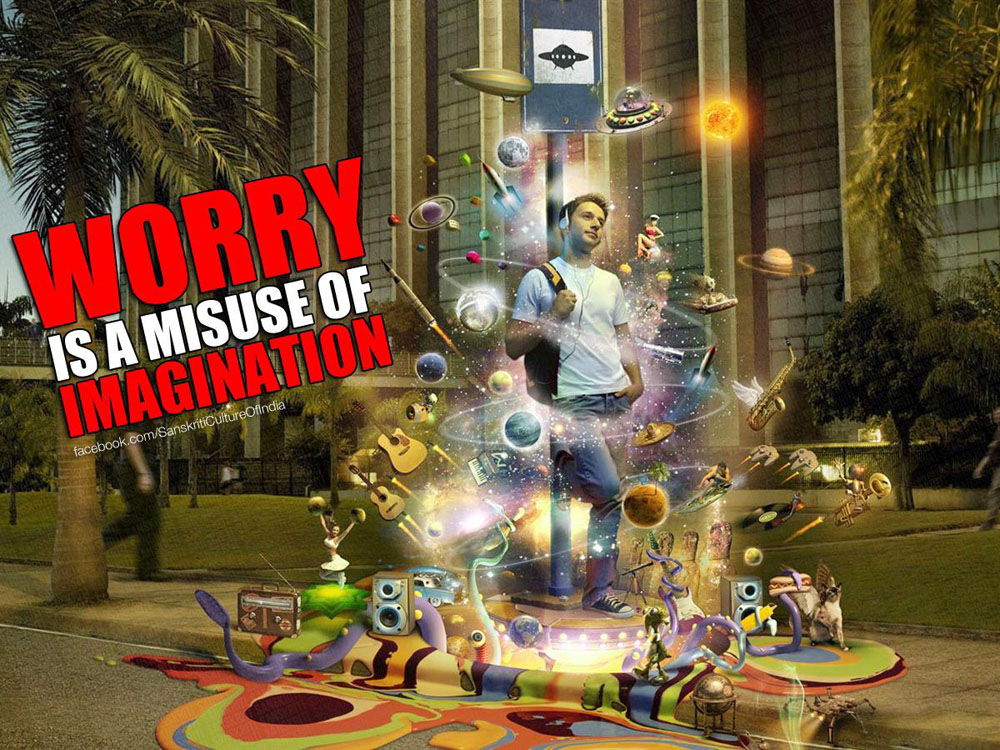Thinking’ going by its definition has mainly two objectives.
1. To generate ideas or find solutions to existing problems, and
2. to formulate the generated ideas or solutions into plans or strategies that can be implemented. Combining these two objectives, the essence of thinking is to birth new ideas or find solutions to existing problems and converting the ideas generated or solutions found into workable plans. This is the sole essence of thinking; anything short of these two is worrying. If after thinking you are unable to draw up a plan of action based on the ideas or solutions you generated, then you’ve just finished worrying’ and have not been thinking.
THINKING vs WORRYING
“Worry is like rocking a chair it gives you something to do but won’t take you anywhere.” Unknown
Worrying is “thinking” aimlessly; not having a definite purpose or objective in mind. It’s focusing on a problem and all its negative attributes rather than focusing on possible solutions. When we worry, we keep going round a particular problem and never being able to arrive at any possible solution. We think of all the other things associated with a problem, except its solution. Rather than looking beyond the problem to arrive at a possible solution, worrying’ looks inside the problem so that it can come up with any suitable explanation. Worrying is a negative emotional state. Thinking is a rational process. One has a negative outcome, the other a positive outcome.
Worrying has never been known to solve a problem; rather it enlarges them. When you spend your time focusing on the negative side of an issue or problem, looking at things only from the unpleasant angle; then you are worrying and not thinking. If all you ever do is pointing accusing fingers or looking for explanations for your inactions and predicaments, then you are worrying.
Thinking leaves you motivated, inspired, eager and refreshed; worrying leaves you depressed, de-motivated, sorrowful, and angry with yourself. Thinking is searching for options and solutions; worrying is searching for excuses and explanations. Thinking liberates – it sets your passion loose, it ignites your creativity. Worrying depresses it shuts down all your creativity, weakens your passion and awakens all your negative emotions. You can never come out of worrying’ and feel better than you went in; You will always feel worse than you were before you started worrying. This is because worrying is counter productive, it’s a negative exercise. It can never produce anything fruitful.
Thinking is productive, it’s an attempt to generate answers or solutions to problems and not an attempt to create more problems or find excuses for the existing ones. While thinking aims at finding a way out of a problem, worrying tries to find a way to justify the problem by putting the blame on something or someone else. Thinking is progressive; it leads forward and gives you a new direction. It focuses on lessons learned from mistakes made; it’s ever ready to accept corrections. It’s projective opens up new ways. Worrying is regressive; it always leads backward trying to justify your present condition or situation. It’s starting with the things you cannot do or have limited resources to do. Worrying is refusing to change; doing the same thing over and over, but expecting a different result. It’s thinking about the good old days’. Worrying focuses mainly on one’s weaknesses, keeping records of all the things one is unable to get, the things you don’t have. It’s playing the blame game; “if only this , then . That”.
Within every problem lies both a difficulty and a possibility; thinking is searching for the possibilities while worrying is searching for the difficulties. This is what clearly differentiates thinking from worrying; because the former produces a course of action (solution), while the later finds a reason for inaction (conclusion).
There are two ways to tell whether you’ve been thinking or worrying. First, by asking yourself this; “what exactly am I focusing on, the problem or a solution”? If your focus is totally on the problem; then you are worrying, but if your focus is on finding a possible solution; then you are thinking. For example, if a person’s problem is that he doesn’t have a job, thinking’ would be to search for a possible solution “how can I get a job?” while worrying would be to try to justify the situation “why is it so hard to get a job?”. The emphasis here is on result, what exactly do you want, a solution to the problem or an explanation for the problem. The second way to tell whether you’ve been thinking or worrying is by looking at your mood. If you’ve been thinking, you will feel very excited, uplifted and energized, you will have a strong urge to immediately implement the ideas or solutions you’ve been able to generate. And if you’ve been worrying on the other hand, then the opposite is the case. You’ll feel weak, upset, downcast and self pity will immediately set in. Rather than generating ideas or solutions, you’d have succeeded in creating more issues to brood over.
I think that this quote by Dale Carnagie sums it up. “It isn’t what you have, or who you are, or where you are, or what you are doing that makes you happy or unhappy. It is what you think about.” Make sure that you think productive thoughts to enrich your life instead of worrying about it.











